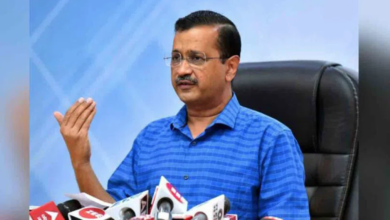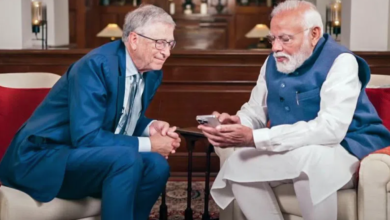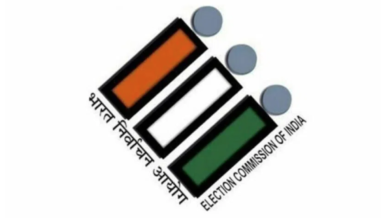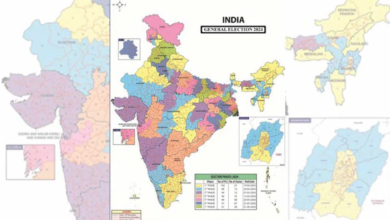Modani files: Adani set up SEZ near Mundra port sans green nod

Beginning today, Telangana Today will be publishing a series of reports on the incredible and meteoric rise of Gautam Adani that stands as the best example of the expression – crony capitalism

Hyderabad: If there is any name that touches a raw nerve among the upper echelons of the Bharatiya Janata Party (BJP), it is Adani.
Ever since US-based shortseller Hindenburg Research came out with a damning report on the Adani Group, the top honchos of the BJP have been reacting in a different way, rather than ordering a probe by the Enforcement Directorate (ED) or Central Bureau of Investigation (CBI) as is their wont (in respect of any issue or allegation against Opposition party leaders). Instead, they come out with arguments that the US-based shortseller is attacking Indian sovereignty and what not!
The unanimous demand of the entire opposition for a Joint Parliamentary Committee (JPC) probe literally fell on the proverbial deaf ear of the Government. While the studied silence continues and the BJP supremo remains unmoved like the great sphinx, here is a backgrounder on Gautam Adani, arguably the most talked about businessman in the world now.
Beginning today, Telangana Today will be publishing a series of reports on the incredible and meteoric rise of Gautam Adani that stands as the best example of the expression – crony capitalism. Read on.
How did Adani get the boost that expanded his business empire?
The story begins with Mundra port, the biggest commercial port in Gujarat. Though it was set up before 2000, Adani’s business got a thrust after Narendra Modi became the Chief Minister of Gujarat. Adani was given more than 12,000 acres on a renewable 30 year lease at a pittance of 60 paise to Rs.2.50 per square metre. This leased land incidentally included grazing lands of villages. Interestingly, the leased land was sub-let to others including the State-owned Indian Oil Corporation at Rs.650 per sq metre. It would also be pertinent to point out that no other company in Kutch or the rest of Gujarat received such largesse on land rates.
The next step for the group was to set up an SEZ near to the Mundra port. Significantly, the State-owned Kandla port had also applied for permission to set up an SEZ, but permissions were denied on the grounds of environmental issues arising out of Coastal Regulation Zones etc. But when Adani’s Mundra port applied, the government moved with alacrity and gave the thumbs up without any environmental clearances. Again, the issue of lack of environmental clearance took nearly two decades to be sorted out in courts.
While it was so, there were other glaring instances of favours being bestowed on Adani by the Gujarat government. The Comptroller and Auditor General (CAG) had flagged two such instances. The CAG pointed out that Adani Energy had received ‘an undue benefit’ of Rs.70.5 crore between 2006 and 2009. Believe it or not, the Gujarat State Petroleum Corporation bought natural gas from the open market and sold it to Adani Energy at a price lower than the purchase price.
The second instance cited by the CAG was that Gujarat Urja Vikas Nigam had recovered a penalty of Rs.79.8 crore from Adani Power for its failure to supply power between August 2009 and January 2012, against the auditor’s calculation, based on the power purchase agreement of Rs.240 crore.
Adani’s sphere of influence was not just confined to getting some benefits. He was so powerful that in 2008, Gujarat’s Advocate General Kamal Trivedi had represented Rajesh Adani, brother of Gautam Adani, before the Gujarat High Court in an appeal against charges of customs fraud by the Enforcement Directorate.
With the big man supporting him to the hilt, Adani soon expanded his activities into coal mining in other States and began acquiring many other businesses worth thousands of crores from others. Between 2014 and 2017, the Adani group acquired projects like Lanco’s thermal power project in Udupi and L&T and Tata’s Dhamra port in Odisha. It also entered new sectors like wind energy, solar manufacturing, lending, power distribution, and aerospace and defence. In September 2017, it tied up with Swedish defense giant Saab to make unmanned aerial vehicles and helicopters. But this tie-up ran into rough weather and got cancelled by the Swedish firm after an expose in the media.
Where did he get such large funds? Investments came just like that and now in retrospect, it is clear that money was coming from his murky sources. In 2018, the Adani Group acquired Reliance Power’s electricity transmission business in Mumbai (Rs.12,300 cr), GMR’s thermal power project in Chhattisgarh (Rs 5,200 cr), Larsen and Toubro’s Katupalli port near Chennai (Rs 1,950 cr), and a power transmission line owned by KEC International in Rajasthan (Rs.228 cr). Towards the end of 2018, the group entered the sewage treatment market when it bagged a project to treat waste water in Allahabad.
According to information culled out, the Modi government has awarded the largest-ever 126 contracts in September and October 2018 (just before elections) to firms to set up and operate piped natural gas networks and fuel stations across India. The bids were called for even before the networks for transporting gas to these cities and districts were completed. The bidding was done without clarity on when gas would reach these areas and at what price. And no prizes for guessing. The largest winner of the bids was Adani.








